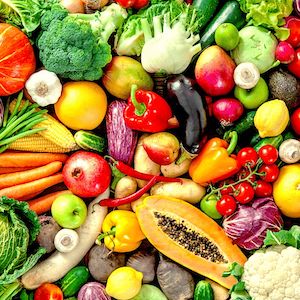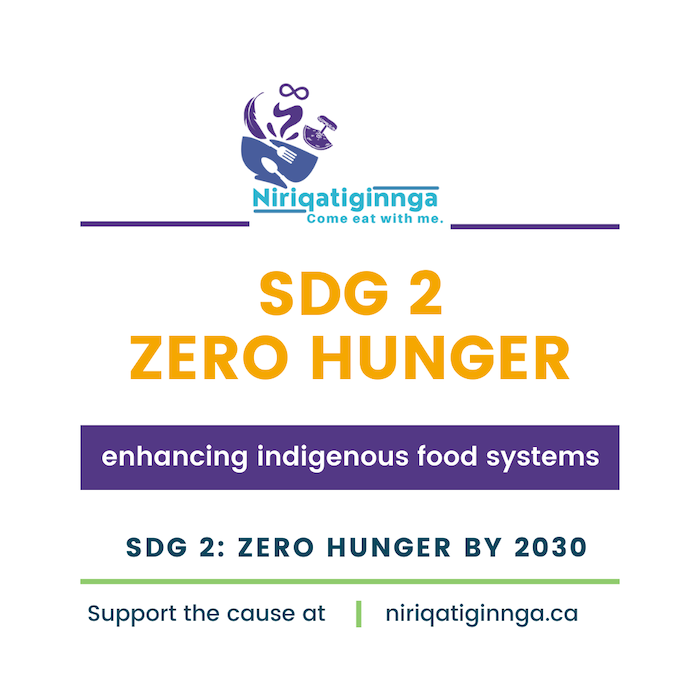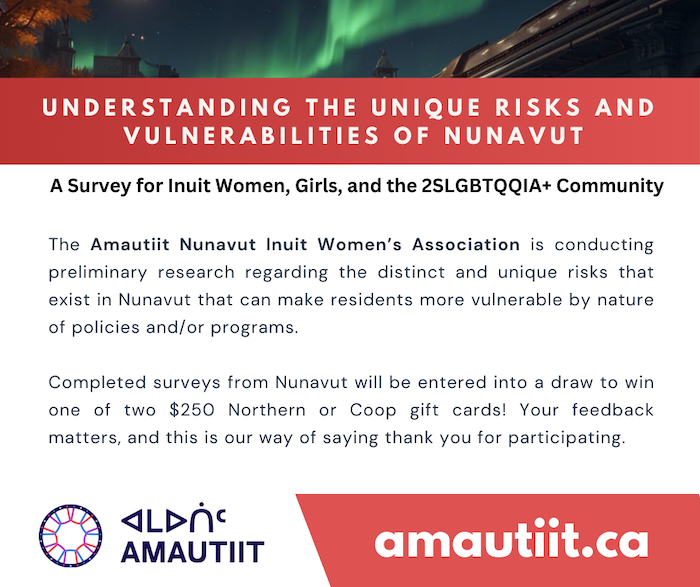An interview with KPMG for ITK
Purpose: Inuit Tapiriit Kanatami (ITK) engaged KPMG to conduct research on Canada’s Nutrition North Canada Program, specifically the direct/personal order process. ITK has communicated there is a lack of knowledge of the direct/personal order process among Inuit customers and other barriers to participating in this program. The aim of the consultation was to understand the direct order process from the supplier side.
Interviews were semi-structured; with questions and topics used to guide the discussion. These discussions were conducted in confidence. Comments are not being attributed to any specific individual or organization and only in aggregate. Interviews last approximately 90 minutes.
Key themes for the discussions were:
- Direct Order Process
- Mechanics of the subsidy
- Customer Service and Marketing
Direct Order Process
Topics for discussion:
- How does your company fulfill customers’ direct orders (order confirmation, picking, packaging, and labeling, etc.?
ABC works from farm to plate. North and south. An extensive network of communities supported, particularly through the Nutrition North Canada program. Activities taking place across each part of the north-south supply chain.
How can the direct order processes be improved? How does it differ from Food Mail?
Niriqatiginnga started in 2021 exploring the goal of using digital arts and cultural entrepreneurship. This fall we’re launching a new iteration, where we put those skills to work, learning to study northern food insecurity and supply chains.
Niriqatiginnga is also a technology entrepreneurship program. That work started when the Arctic Buying Company, which administers the program, started looking to build out a framework to support a growing need to improve direct order processes, particularly with the Nutrition North Canada program.
While the technology platform being built is still in an advanced prototype stage, orders are increasingly being done online, and there is a growing need to automate and improve the processes for customers to make direct orders. This new system is able to support everything from ordering and payment processing, to order confirmation, picking, packaging, labeling and shipping.
Systems generate tonnes of data across dozens of communities. Need to find a way to manage all that data. What does a data management plan look like? How can the “back-end” be developed to facilitate automation of reporting – what kinds of information need to be reported, could be reported? Businesses and communities need a tool of some kind, or processes to enable more efficient, effective/relevant reporting. Difficult for some communities to even have the capacity to report, or to understand what data/information they might have. Very few northern/Arctic/Indigenous examples to draw on, particularly on the tech side.
Please outline the mechanics of the subsidy payment process from your organization’s perspective.
Topics for discussion:
- The frequency of claims is on a monthly basis; are there challenges associated with this frequency?
Not with automation. Processes could be improved where the government is less of a gatekeeper – policing of some subsidies (ie: the whole lima bean thing) where subsidy payments are held up for only a few cents; Government is a gatekeeper and a barrier, not a facilitator. Issues are in the heavy costs of administering NNC subsidies. Carries a huge financial burden (definitely not making money off of it) on the business side. Government can be heavy-handed, more with enforcing compliance than facilitating doing better.
Have you participated in an NNC compliance review? Can you describe your experience?
Yes. One of our primary partners and program administrators, the Arctic Buying Company Kivalliq has participated in Compliance Reports:
https://www.nutritionnordcanada.gc.ca/eng/1673556864390/1673556900019
https://www.nutritionnorthcanada.gc.ca/eng/1411072635521/1411072674574
Do you believe the transparency of the subsidy is sufficient?
No. Lots of projects studying this issue. Very little discussions amongst researchers, projects, businesses, stakeholders/customers and organizations. Inuit businesses continue to be studied, but not allowed to be in a position to study or contribute. Systemic/colonial barriers in program design. Projects that could be collaborating are instead working at cross-purposes; potential duplication of effort
Transparent from the supplier side – yes for ABC but is NNC as a program being equally transparent? Where do the data companies provide (at HUGE expense) end up? It can be seen as extractive because companies are made to generate and report on this data (at their own expense), but ineligible from accessing funding to study that data (that companies themselves generate). And other groups, universities/Inuit orgs, etc. are able to access this kind of funding.
How can the subsidy process/interface with the federal government, suppliers and consumers be improved?
Huge burden placed on Indigenous-owned businesses (and all businesses involved in the NNC Program) for reporting and compliance. Heavy bureaucracy, non-transparent information from NNC side, while businesses need to do a tonne of administration (only receiving $100/month for being a “partner” of the program). Huge costs to design and develop technologies for reporting; requires a lot of resources and budgets; very difficult, if not almost impossible to successfully navigate federal funding programs (ie: Innovation, Technology), etc. Huge costs to develop these toolsets, ability to generate reports. Should be training and engaging post-secondary students in Winnipeg while they are here with studies. Create jobs, align with business students, etc.
Many northern businesses are not able to access programs, or develop technologies, etc. Need to see eligibility for programs relaxed/made more open. CanNor/PrairiesCan are largely re-payable loans … newer, more innovative programs like Manitoba Sustainable Canadian Agriculture Program are more inclusive of businesses, have better cost-sharing (ie: not 50:50/repayable but offering 100 percent reimbursement on eligible activities).
Need to see less red tape. Too many programs have to be done through non-profits/Indigenous Orgs/academia when businesses could also be administering and participating/supporting/funding. Too many gatekeepers, community capacity issues – could be supporting partnerships with communities, administration of programming, etc. all options that could optimize not just getting food into communities at more affordable prices, better quality, but also shipping faster, less expensive, etc. Need to have a tool or process or study of some kind to build capability for reporting on food sales/access/inequities/shipping
Customer Service and Marketing
Please describe how your organization interfaces with direct order customers. Topics for discussion:
How are customer orders typically placed (websites, applications, phone, and/or e-mail)
The web site is becoming a major tool, a mobile application is planned for development. Orders are also done by phone and e-mail.
2023-2024 Niriqatiginnga objective: Market Development and expansion activities will intersect with youth food literacy and cultural entrepreneurship research training.
https://niriqatiginnga.ca/projects/towards-a-framework-for-northern-food-systems-innovation/
What is the distribution of forms of payment for direct orders (credit, cash, cheque, etc.)
Niriqatiginnga (as an extensible technology framework), uses an in-house API that was developed for payment processing. This facilitates payment processing by credit card, debit cards. Payments by cheque, cash and other online services like PayPal, community food vouchers, etc. are also supported.
Do you have a budget dedicated to marketing your products and services (particularly direct orders) in eligible communities? Does marketing material get tailored to specific communities (e.g., language)?
Yes. The company spends about $100,000 a year on marketing-related activities. Products and services are available in more than 30 eligible communities and beyond. Using social media, digital tools, marketing materials are able to be translated and tailored to specific communities (something we want a “dashboard” for reporting to focus on, ie: who is ordering what/why/why not?).
A major problem to marketing is the Nutrition North Canada Program regularly leaves registered suppliers off of its list. Arctic Buying has been an NNC partner since 2010 and is not listed on the supplier site despite months of requesting it. Fixed on Sep 12 …
It is important for Inuit-owned businesses to be listed in this registry. Recognition as an NNC supplier is absolutely critical to marketing and being marketable (people check to see if we really are registered, and end up not seeing us). Many federal programs for Marketing ie: Agri-Food Canada only open to non-profits, who often don’t have a vested interest (ie: just an admin fee). Businesses who actually have to do the work, support the training, administer programs like NNC not eligible to apply for many economic programs (????). Federal government is in some ways almost “anti-business.”
Supply chain studies … how can these studies be used to help enhance reporting. A “dashboard” of food sales/shipping, but also for use as a compliance reporting tool. People (train them), Process (lots of process improvement) and Tools (technology being the most important).
Training for Inuit and Indigenous youth, business students, those interested in cultural entrepreneurship … capacity to teach them about marketing, sales, microeconomics, job skills, financial literacy, learning to work with data, etc. transferable skills … data/information management needed … cannot manage what we cannot measure
For direct orders, do you communicate pre/post subsidy prices to your customers?
Direct orders for customers using the website are able to see the Nutrition North Canada subsidy applied to and directly passed on to them. They are able to see both the pre-and post subsidy prices for NNC-subsidized items clearly in their shopping cards.
Functionality developed in-house at great expense. Not eligible for many “innovation programs” and need to see more inclusion of northern businesses ie: particularly in the areas of technology and innovation. Solutions raised in this consultation are already effectively in place. Inuit-owned businesses like ABC need to be supported in building out these kinds of frameworks for economic development, NNC food sales, efficient shipping; reducing environmental waste/carbon footprint stuff too.
For direct orders, do you communicate pre/post subsidy prices to your customers?
Automatic calculation/application of NNC subsidy and directly passed on to customers; technology framework / back-end also automatically calculates landed shipping costs. We are able to demonstrate building technologies needed in an Arctic and Northern context … For more information, visit https://arcticbuyingco.com/shop









